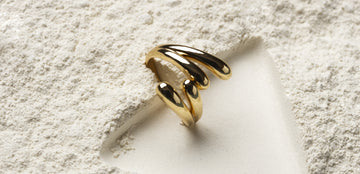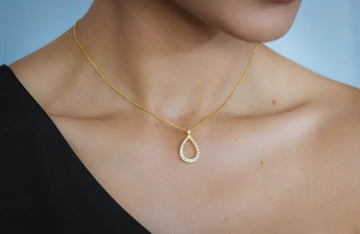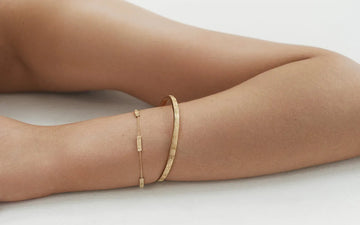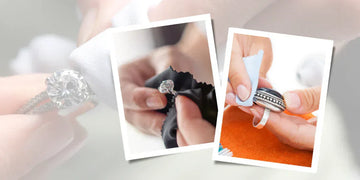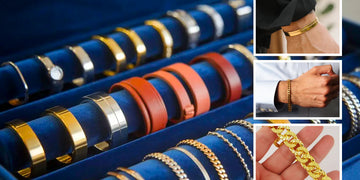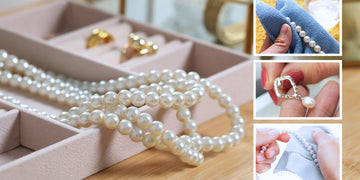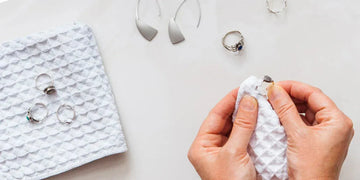Sterling silver jewelry has always been a popular choice. It offers elegance and style that never fades.
Sterling silver, whether it's a treasured heirloom or a new piece, brightens up any outfit. However, like all precious metals, it requires proper care to maintain its beauty for long period of time.
Over time, sterling silver can tarnish, but with the right knowledge and maintenance, you can keep your jewellery sparkling for years.
This guide will explore the types of sterling silver and effective cleaning techniques to keep your silver jewellery shine for year.
What Is Sterling Silver?
Sterling silver is an alloy combining 92.5% pure silver and 7.5% copper. Adding copper gives sterling silver strength and durability, making it an ideal choice for jewellery.
People know pure silver, known as fine silver, is too soft for everyday use, so they alloy it with copper. Jewellery designers highly value sterling silver for its lustrous, shiny appearance, so they widely use it in their creations.
Often marked with a "925" stamp, sterling silver signifies its authenticity.

This stamp ensures that the piece is made from 92.5% pure silver, the industry standard for sterling silver.
Some pieces are even plated with rhodium, a rare and expensive metal, to add extra shine and reduce tarnishing.
Sterling Silver vs. Silver-Plated Jewellery
It’s essential to understand the difference between sterling silver and silver-plated jewellery. While both have their advantages, they differ significantly in quality and longevity.
-
Sterling Silver: Made from 92.5% silver and 7.5% copper, sterling silver is durable, long-lasting, and ideal for daily wear. Its quality and shine make it a popular choice for high-quality jewellery.
-
Silver-Plated Jewellery: In contrast, silver-plated jewellery is made from a base metal (usually brass) coated with a thin layer of silver. Silver-plated items do not have the same purity or durability as solid sterling silver, and the thin silver coating can wear off over time.
When buying sterling silver jewellery, always look for the "925" stamp to ensure authenticity and longevity.

Why Does Sterling Silver Tarnish?
Tarnishing is a natural process when silver reacts with elements like sulphur, oxygen, and moisture. The copper in sterling silver reacts with these substances, causing a dark, dull layer on the surface. Common causes of tarnishing include exposure to:
-
Sulphur: Found in everyday items like eggs, onions, and mustard.
-
Oxygen and Moisture: Air and humidity can speed up the tarnishing process.
-
Chemicals: Lotions, perfumes, and cleaning products can accelerate tarnishing.
While tarnishing is inevitable over time, it’s not permanent. Regular cleaning and proper storage can prevent excessive tarnish, keeping your jewellery looking beautiful.
How to Clean Sterling Silver Jewellery at Home
Cleaning sterling silver jewellery at home is relatively easy, and you can restore its shine with a few simple tools. Here are some effective methods to clean your sterling silver pieces:
1. Polish with a Soft Cloth
One of the easiest and most effective ways to maintain sterling silver jewellery is to polish it with a soft cloth. Use a microfibre or lint-free cloth to gently rub the surface of your silver jewellery. This will help remove dirt and restore its lustre. Always polish in the direction of the grain, not in a circular motion, to avoid scratching the silver.

2. Deep Clean with Soap and Water
Mix a small amount of mild dish soap with warm water for deeper cleaning. Soak your jewellery for a few minutes, then gently scrub the tarnished areas with a soft-bristle toothbrush. Be sure to clean intricate details and crevices. Rinse the jewellery with clean water and dry it with a soft cloth.
3. Baking Soda Paste
If your sterling silver has stubborn tarnish, a baking soda paste can help. Mix one tablespoon of baking soda with just enough water to form a thick paste. Use a soft-bristled toothbrush to apply the paste to the tarnished areas and gently scrub. Rinse with warm water and dry with a clean, soft cloth.

4. Electrolyte Cleaning Method
For heavily tarnished jewellery, the electrolyte method is highly effective. You’ll need:
-
2 tablespoons of baking soda
-
2 tablespoons of salt
-
2 cups of boiling water
-
Aluminium foil
Steps:
-
Line a baking dish with aluminium foil, shiny side up.
-
Add the baking soda and salt to the dish.
-
Pour the boiling water over the mixture and stir gently.
-
Place your tarnished silver jewellery into the solution, ensuring it touches the foil.
-
Let it sit for 5-10 minutes, then rinse and buff with a soft cloth.
This method uses a chemical reaction that helps lift tarnish off the silver.
Final Thoughts on Caring for Sterling Silver Jewellery
Sterling silver jewellery is elegant and durable, but it requires proper care to maintain its shine and beauty. Following the cleaning and storage tips in this guide, you can keep your jewellery looking its best for many years.
Regular cleaning, proper storage, and avoiding exposure to harmful chemicals are the keys to preventing tarnishing and maintaining the lustre of your sterling silver jewellery.
Whether you are new to sterling silver or have collected it for years, these steps will help keep your jewelry sparkling and beautiful.
